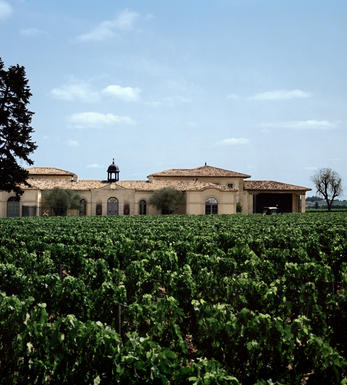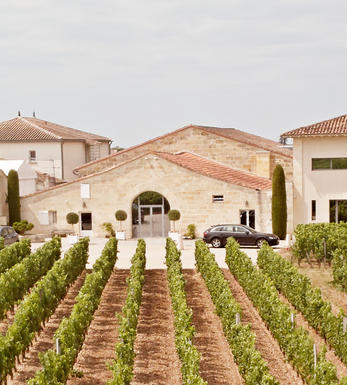
2004 Petrus, Pomerol, Bordeaux

Critics reviews
The 2004 Petrus is not one of the strongest wines of the decade, though it remains a fine Pomerol. The bouquet does not hold back with splendid fruit concentration: floral top notes with pressed violets and shaved black truffles, traits I observed in previous bottles. The palate is gracefully moving into its secondary phase with touches of tobacco and warm gravel infusing the red fruit. However, there is a conservative element to this Petrus that opts to play it safe. You do not feel as if it will evolve into something more, which begs the question of whether you should continue sharing it. I see no harm in pulling bottles now; larger formats later.
Drink 2020 - 2032
Neal Martin, Vinous.com (July 2020)
Remarkably red-fruited still on the nose with just a little bit of exotic spice and sweetness: the epitome of luxury and decadence yet it also smells so youthful and vibrant. Firm and dry on the palate, less yielding than I expected from the aroma. Much more tertiary character – undergrowth. Chewy finish, but it's warm and satisfying and still has a way to go.
Drink 2016 - 2032
Julia Harding MW, JancisRobinson.com (March 2014)
The dark plum/ruby-tinged 2004 Petrus possesses high acidity as well as copious amounts of sweet cherries and black currants intermixed with hints of cola, earth, and truffles. Deep, medium-bodied, concentrated, ripe flavours are excruciatingly firm and tannic. This backward, structured, muscular Pomerol requires a decade of cellaring, but it possesses the potential to be the longest-lived wine of the vintage, lasting 30-40 years.
Anticipated maturity: 2017 - 2035
Robert M. Parker, Jr., Wine Advocate (June 2007)
Deep medium red. Subtly complex aromas of mulberry, red cherry, toffee, caramel, iron and flowers. A bit narrow on entry, then expands in the middle palate without any loss of focus. A very firmly built, vibrant and classy 2004 with a tight mineral core and ineffable spice character. This is by far the most backward 2004 in the Moueix portfolio. Finishes with terrific aromatic persistence and subtlety. This will surely evolve in the direction of toffee and truffle and may ultimately merit an even higher rating.
Stephen Tanzer, Vinous.com (May 2007)
About this WINE

Petrus
Petrus is a wine estate in Pomerol on the Right Bank of Bordeaux. It is among the most celebrated and recognisable wines in the world.
While the estate can trace its history to at least 1837, it flew relatively under the radar until around the 20th century. Madame Loubat, who became the sole owner in 1945, felt that the estate was truly special, and her efforts were instrumental in establishing Petrus on the world stage. She also appointed Jean-Pierre Moueix as the exclusive agent; he and his sons Jean-François and Christian were key in building the estate’s modern reputation. The Moueix family became majority owners here in 1969. In 2018, they were joined by American-Colombian Alejandro Santo Domingo, who purchased a 20% stake.
Petrus is located atop the Pomerol plateau. Most of its vines sit on a so-called “buttonhole” of blue clay soil, known as smectite. This soil’s ability to retain water is a huge benefit in the Pomerol appellation, where drought is a known issue. The vineyard is planted mostly to Merlot.
The estate is run today by winemaker Olivier Berrouet, previously of neighbouring Château Cheval Blanc. Olivier joined in 2008, taking over from his father, Jean-Claude, who had produced 44 vintages of Petrus in his time.

Pomerol
Pomerol is the smallest of Bordeaux's major appellations, with about 150 producers and approximately 740 hectares of vineyards. It is home to many bijou domaines, many of which produce little more than 1,000 cases per annum.
Both the topography and architecture of the region is unremarkable, but the style of the wines is most individual. The finest vineyards are planted on a seam of rich clay which extends across the gently-elevated plateau of Pomerol, which runs from the north-eastern boundary of St Emilion. On the sides of the plateau, the soil becomes sandier and the wines lighter.
There is one satellite region to the immediate north, Lalande-de-Pomerol whose wines are stylistically very similar, if sometimes lacking the finesse of its neighbour. There has never been a classification of Pomerol wines.
Recommended Châteaux : Ch. Pétrus, Vieux Ch. Certan, Le Pin, Ch. L’Eglise-Clinet, Ch. La Conseillante, Ch. L’Evangile, Ch. Lafleur, Trotanoy, Ch. Nenin, Ch. Beauregard, Ch. Feytit-Clinet, Le Gay.

Cabernet Sauvignon Blend
Cabernet Sauvignon lends itself particularly well in blends with Merlot. This is actually the archetypal Bordeaux blend, though in different proportions in the sub-regions and sometimes topped up with Cabernet Franc, Malbec, and Petit Verdot.
In the Médoc and Graves the percentage of Cabernet Sauvignon in the blend can range from 95% (Mouton-Rothschild) to as low as 40%. It is particularly suited to the dry, warm, free- draining, gravel-rich soils and is responsible for the redolent cassis characteristics as well as the depth of colour, tannic structure and pronounced acidity of Médoc wines. However 100% Cabernet Sauvignon wines can be slightly hollow-tasting in the middle palate and Merlot with its generous, fleshy fruit flavours acts as a perfect foil by filling in this cavity.
In St-Emilion and Pomerol, the blends are Merlot dominated as Cabernet Sauvignon can struggle to ripen there - when it is included, it adds structure and body to the wine. Sassicaia is the most famous Bordeaux blend in Italy and has spawned many imitations, whereby the blend is now firmly established in the New World and particularly in California and Australia.


Buying options
Add to wishlist
Description
The 2004 Petrus is not one of the strongest wines of the decade, though it remains a fine Pomerol. The bouquet does not hold back with splendid fruit concentration: floral top notes with pressed violets and shaved black truffles, traits I observed in previous bottles. The palate is gracefully moving into its secondary phase with touches of tobacco and warm gravel infusing the red fruit. However, there is a conservative element to this Petrus that opts to play it safe. You do not feel as if it will evolve into something more, which begs the question of whether you should continue sharing it. I see no harm in pulling bottles now; larger formats later.
Drink 2020 - 2032
Neal Martin, Vinous.com (July 2020)
wine at a glance
Delivery and quality guarantee